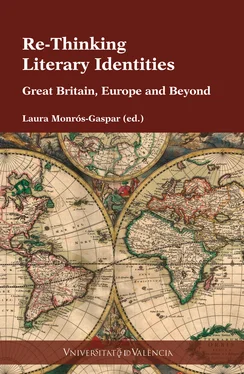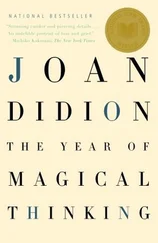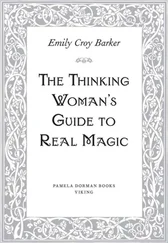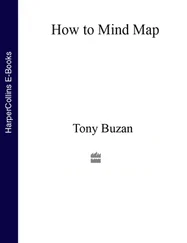RE-THINKING LITERARY IDENTITIES
GREAT BRITAIN, EUROPE AND BEYOND
RE-THINKING LITERARY
IDENTITIES
GREAT BRITAIN, EUROPE AND BEYOND
Laura Monrós-Gaspar (ed.)

All rights reserved. No part of this publication may be reproduced, stored in a retrieval system, or transmitted, in any form or by any means, without the prior permission in writing of the publisher, or as expressly permitted by law, or under terms agreed with the appropriate reprographic rights organization (CEDRO - www.cedro.org).
© The contributors, 2017
© Universitat de València, 2017
Cover illustration: Nova totius terrarum orbis tabula Amstelodami , Gerard van Schagen, 1689
ISBN: 978-84-9134-261-8
CONTENTS
Acknowledgements
Laura Monrós-Gaspar
Transliterary dialogues in Great Britain and beyond
POLITICS AND POETICS
Miguel Teruel
Anns a’ Chànan Chùbhraidh/En la lengua fragante: Translating Scottish Gaelic Poetry
Stephe Harrop
Staging a Transforming Great Britain: Tamlane, the Social Turn, and the 2014 Referendum
María Gaviña Costero
Brian Friel: the Shaman, the Artist and the Trickster in Northern Ireland
FROM SPAIN TO GREAT BRITAIN AND BACK
Rocío. G. Sumillera
The Myth of Don Juan in Seventeenth-Century England: Shadwell’s The Libertine
Miriam Borham Puyal
Ladies-errant, Visionaries and Romancers: The Quixotic Myth in British Fiction (1614-1818)
PERFORMING SELVES
Ana Fernández-Caparrós Turina
Transformative otherworldly transitions in Sarah Ruhl’s Eurydice (2003)
Margarete Rubik
Kaspar Hauser in the Twenty-first Century: The Feral Child in Emma Donoghue’s novel Room
INTERROGATING CANONICAL IDENTITIES
Mayron E. Cantillo Lucuara
Arthur Machen’s Pan (1894): From the Metaphysical Identity of Evil to the Late-Victorian Canons of Perversity
Lin Petterson
The Neo-Victorian Freak Show: Locus of Power, Desire and Significance
Victoria Puchal Terol
Imperial Travellers: from Odysseus to Robinson Crusoe
Bibliography
ACKNOWLEDGEMENTS
The collaborative project that led to this volume began as an academic discussion about the literary construction of Europe at the Universitat de València in 2015. The conference ‘Global Britannia: Myth, Appropriation and Identity’, from which the preliminary ideas for this volume sprung, was held at the Faculty of Philology, Translation and Media Studies at the UV. The conference benefited from funds kindly granted by the Faculty, the office of the Pro-Vice Chancellor for Culture and Social Equality, and the Department of English and German Studies at the Universitat de València. The conference gathered a number of scholars from various European countries to discuss and (re)think modern constructions of literary identities. It also involved several speakers and respondents who have not participated in the volume, yet whose intellectual support has made a valuable contribution to this book. Special thanks are due to the members of the group ‘Literature, Arts and Performance’ at the Universitat de València, who have provided expertise and challenging questions that have enlarged our ideas on adaptation and reception studies. The conference hosted, as well, a stunning performance by Stephe Harrop of her own Janet’s Baby: A New Tamlane .
Several entities provided the financial support that made our research for this book possible. We gratefully acknowledge the Universitat de València for providing funds supporting the research carried out for the project ‘Construyendo Europa: literaturas en contacto y arquetipos literarios’ (V-INV-PRECOMP14-206579). Also the Ministry of Economy and Competitiveness of the Government of Spain for granting the project FFI2013-44154-P, ‘Nuevos parámetros críticos en torno al concepto de la huella y su aplicación a la literatura reciente en lengua inglesa’ and the Research Network FFI2015-71025-REDT ‘VINS: Victorian and Neo-Victorian Studies in Spain Network’ which funded the research presented in Chapter 9. Thanks are also due to the Departament de Filologia Anglesa i Alemanya at the Universitat de València for providing the facilities for the conference from which the idea for this volume emerged.
TRANSLITERARY DIALOGUES IN
GREAT BRITAIN AND BEYOND
Laura Monrós Gaspar
Universitat de València
The comedy period film Love and Friendship , directed by Whit Stillman and based on Jane Austen’s epistolary novel Lady Susan (ca.1794) was released in 2016, only a few months before the publication of this book. Stillman’s revisiting of Austen is but one of the latest contributions to what has been recently termed ‘Austenmania’. Together with the myriad adaptations, rewritings, sequels and prequels of the works by Jane Austen, the ‘Austenmania’ industry includes numberless cross-marketing products which range from organized tours on Jane Austen across England, to regency balls, and even dolls of the most famous characters of her novels. In the nature of these cultural products, Pucci and Thompson argue, there is an ‘attempt to promote a sense of unbroken tradition that confirms national identity and ostensibly works to repeat, to remake the past in film or through other objects’ (2003: 2). Indeed, adaptations of Jane Austen’s novels have been variously used to debate national identity and Englishness at various times throughout the history of Great Britain. For example, in the aftermath of World War I, adaptations of Austen’s works spearheaded the nostalgia of the inter-war period and between the 1940s and 1950s they served to define Englishness both in the UK and abroad (Cano 2017: 41-58). Yet for modern audiences, the pleasure in the process of adaptation does not come from the mere repetition of an idealized past alone but also from the Deleuzian ‘repetition with différence’, ‘the repetition with variation, from the comfort of ritual combined with the piquancy of surprise’ (Hutcheon 2006: 4).
The coexistence of the past with the present also underlies Ricoeur’s notion of the creative power of repetition which he claims to be contained ‘entirely in this power of opening up the past again to the future’ (2004: 380). In looking at the future, the constant migration of stories to new media and cultural forms with new characters, plots and scenarios, is inevitably linked with the proliferation of new channels of mass diffusion. Whether as victims, consumers or producers of such massive re-creation of cultural artefacts, it seems as though we are reproducing the patterns of cultural consumerism reigning in the nineteenth century. The Victorians, Hutcheon contends, ‘had a habit of adapting just about everything—and in just about every possible direction; the stories of poems, novels, plays, operas, paintings, songs and dances, tableaux vivants were constantly being adapted from one medium to another and then back again’ (2006: xiii) Therefore, Hutcheon’s own analysis of the presence of adaptations in the miniseries and TV movies which won Emmy Awards back in 2006 is easily outdated if one considers the numberless appropriations of the works by Jane Austen on websites, blogs and other new media which have proliferated in the past decade.
This brief account of the widespread phenomenon of Austenmania exemplifies the perlocutionary power of certain canonical writers and literary figures from the Anglophone tradition to create a community of readers which, more often than not, becomes transnational. The chapters gathered in this book reflect on the power of such writers, characters and myths to speak to present-day audiences about the creation of modern identities. Yet the process, as Chapters 4 and 5 of this volume demonstrate, also works inversely, and real-life stories, literary figures and cultural images such as Don Quixote and Don Juan, from the Spanish tradition, or Caspar Hauser from the German, provide as well fruitful ground for cultural products in the Anglophone speaking world.
Читать дальше











